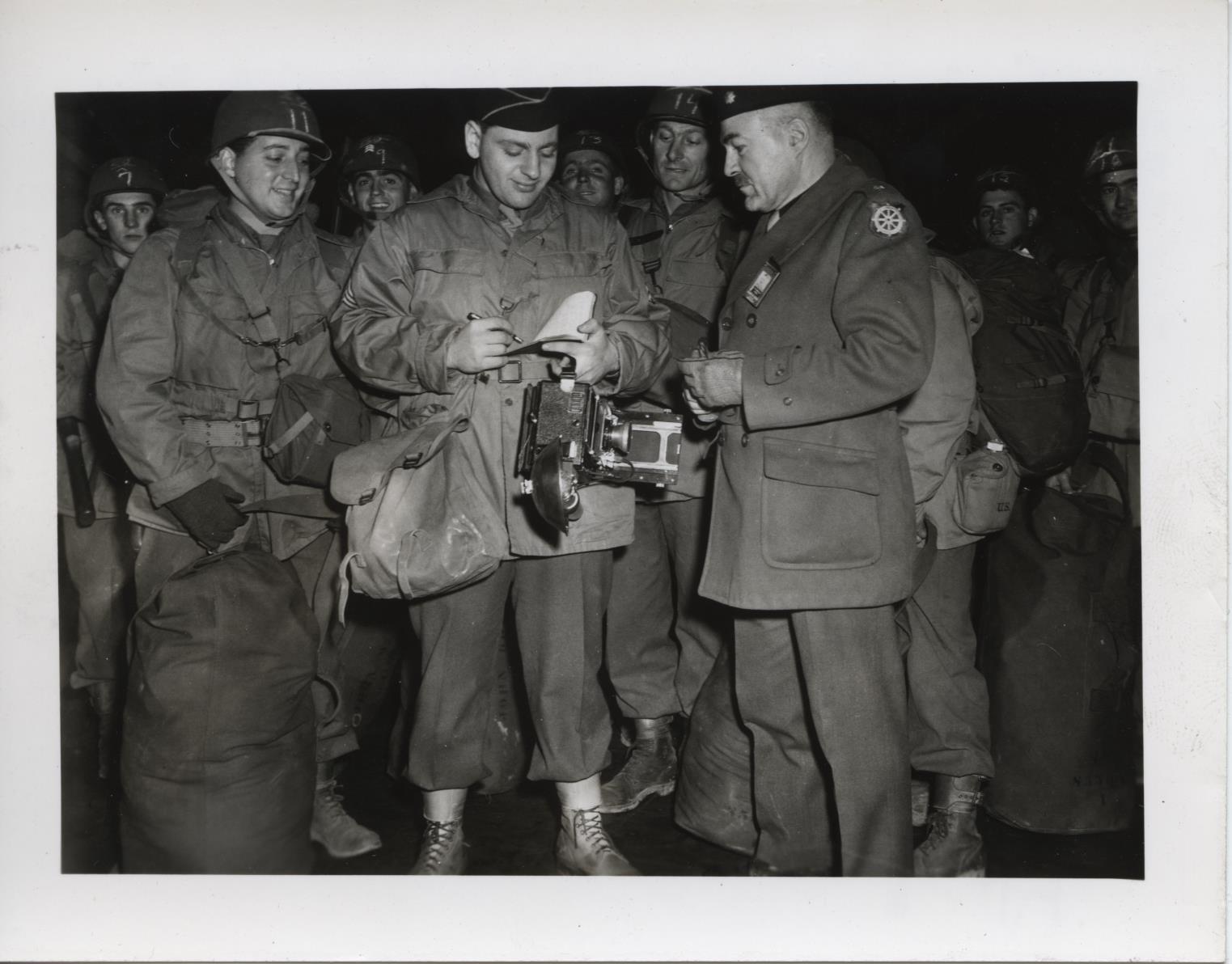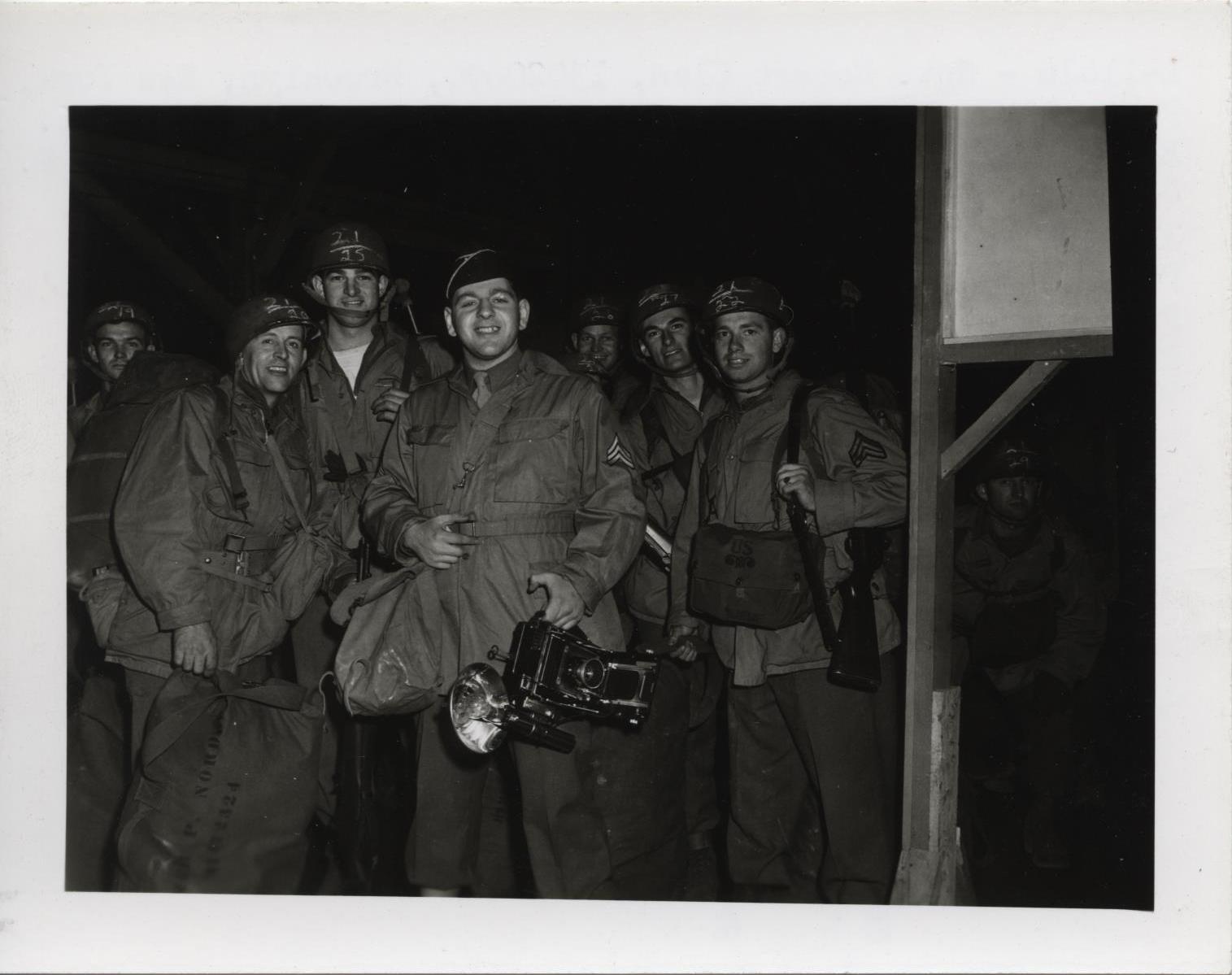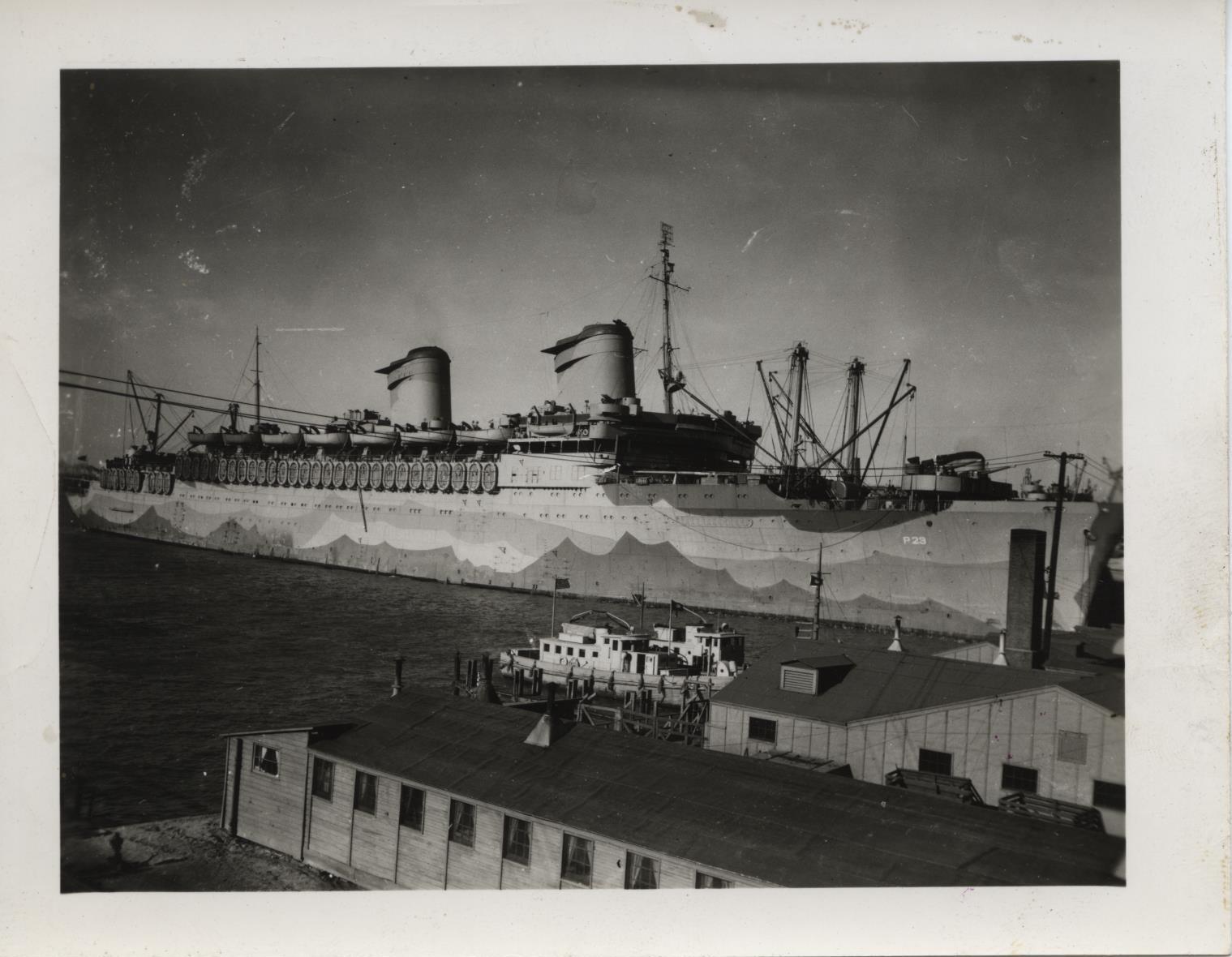In the summer of 1942 Newport News, Virginia, was once again called upon to play a major role for the United States as the armed forces prepared for another war in Europe. Just as they had done in the first World War, the railroads and ports would be used to transport massive numbers of soldiers and supplies abroad. Collectively the Hampton Roads Port of Embarkation included warehouses and barracks in Warwick County, offices and piers in Newport News, a hospital in Phoebus, Fort Monroe, piers in Sewall’s Point, and the old Norfolk Army Base. Major W. Reginald Wheeler, in his two volume set about HRPE, The Road to Victory, writes that 1,687,000 men and women passed through the port before its decommission in 1945.
In the midst of all this hustle and bustle was the U.S. Army Signal Corps, hard at work documenting the daily life of soldiers and officers, their work loading cargo and embarking passengers, the many ships that came to port, and much more. Photographers like Sergeant Robert Olen, shown below with HRPE historian Major Wheeler, produced the more than 14,000 prints and negatives that we are currently working to catalog and make available to the public.
At The Mariners’ Museum archives are using a recent grant from the Council on Library and Information Resources to catalog the prints, digitize them, and find ways to make them available to the public. This might include exhibitions in the museum, in the library, or online. Satellite installations at partnering institutions are also a possibility. Because these comprise a “hidden collection” we don’t really know what we will find along the way! No one has looked at them all in a very long time. We’re excited to bring you updates on this project through the Port of Call blog, Facebook, Instagram, and via Twitter @MarinersMuseum.
Sarah Puckitt, Curator of Photography and Photo Archivist for The Mariners’ Museum, immediately recognized that in this portrait Sgt. Olen is shown carrying his trusty Graflex camera. “This was a professional quality camera,” she explained, “similar to what would have been used by a 1940s press photographer.” These were superior quality cameras, more expensive and more difficult to use compared to the popular consumer cameras like the Brownie. Whereas your old family photos were likely taken using roll film, the Graflex used film almost twice the size yielding pictures of a higher quality. The film came in a two sided cartridge, which the photographer had to remove and flip after each shot. The lenses were finer on these cameras too and you would have gotten only one use out of the flashbulb. At the end of the day photographers could look forward to more work in the darkroom developing negatives and making prints. Proper use of these cameras required professional expertise. The Signal Corp photographers had their work cut out for them!
Sgt. Olen is having a moment in front of the camera for a change because he has been assigned temporary duty as ship’s photographer about the US Army Transport, West Point, a great steamship formerly known as the SS America. The West Point is shown below docked at Newport News. Researchers in the library have not yet identified the naval camouflage measure she bears, so if you want to take guess please leave a comment in the comments section!
Bon Voyage, Sgt. Olen! Hopefully as we catalog the collection we will discover more of your colleagues along the way!


